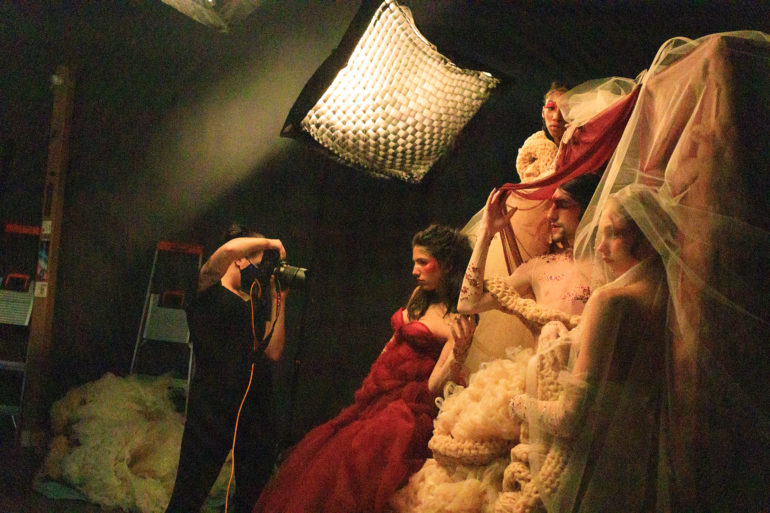So tell me a little bit about the concept of your senior collection.
My senior concept is titled ‘A Letter of Shared Skin.’ It’s based on my mother and I’s experience with eczema and how it affected our lives in similar ways. At the beginning of this summer, my mom wrote me this letter, talking about all of her different skin conditions and how they would affect her physically and emotionally. I think about that a lot because it affects me now in the same way, which makes me feel more connected to her, but also sad knowing that she went through the same feelings of shame and self-loathing. Over time I came to appreciate this trait as a beautiful thing, a new way to connect to my mom because we share something so deep within ourselves, even though it’s not traditionally looked at as beautiful or even acceptable. I considered how to represent this with personal meaning, so I looked at my tulle dance costumes. That’s how I got the inspiration for the materials I used. I used to dance growing up, I was in ballet competitions all of the time because I loved it, but the tulle irritated my sensitive skin and made my breakouts exponentially worse. My mom would make them for me, and since I got the conditions from her in the first place, she was also covered in rashes by the end of the dance season. I explored silhouettes and new ways of integrating the tulle as a texture, and the rest fell into place. Mostly, though, it’s about me and my mom and this big looming “shame” that we’ve always felt, so I decided to own it and stick it to the stigma in the form of fashion.
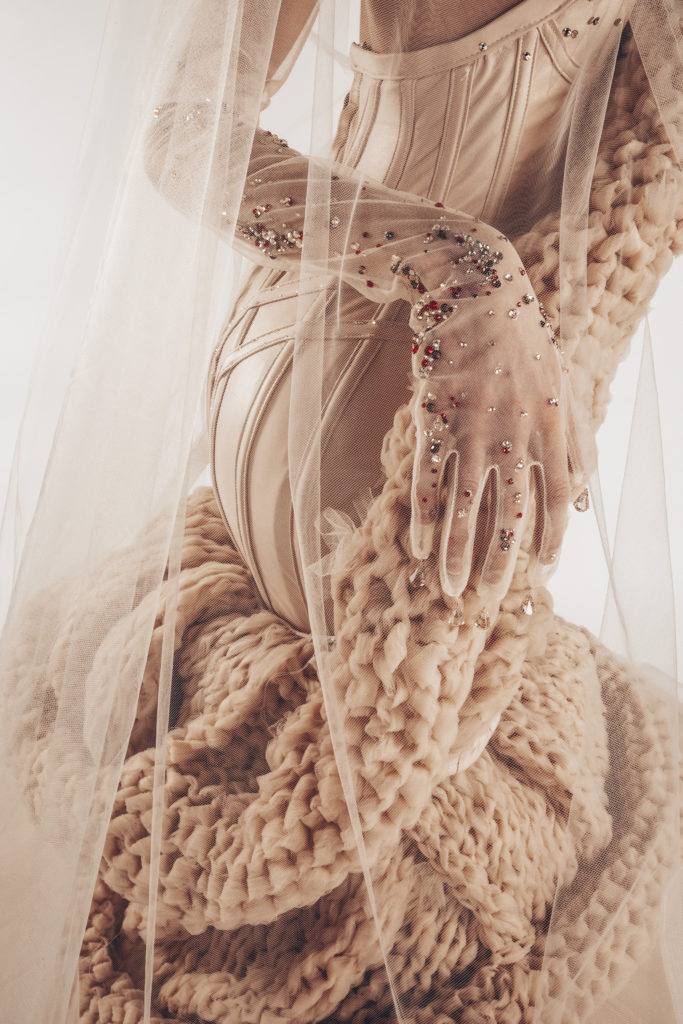

What was it like to develop this concept during the fall?
During our process at SCAD, in the beginning, we created three sketchbooks during the summer for the senior course and then chose one right off the bat the first week. At first, I knew that I wanted to do this concept, but I knew it wasn’t my strongest sketchbook, and my professor agreed. Still, I felt so strongly about it as a story and my connection to it personally. I’m a very sentimental person, and my best work is extremely personal, so I was encouraged to re-work the sketchbook and delve deeper to prove my dedication. That whole process was challenging, but getting through it was incredibly rewarding because, at every step, we would have assignments such as “Okay, now you play with fabrication” or “now you explore silhouettes,” and it was always one more step at a time. We ultimately developed a pre-collection, an initial lineup of sketches of “finalized” designs. Looking back, I cringe a little at mine, but I was totally in love with it at the time. It’s cool to see the process keep growing and improving until I have a final body of work in front of me, fully realized, that I can be proud of and love as much as I do.
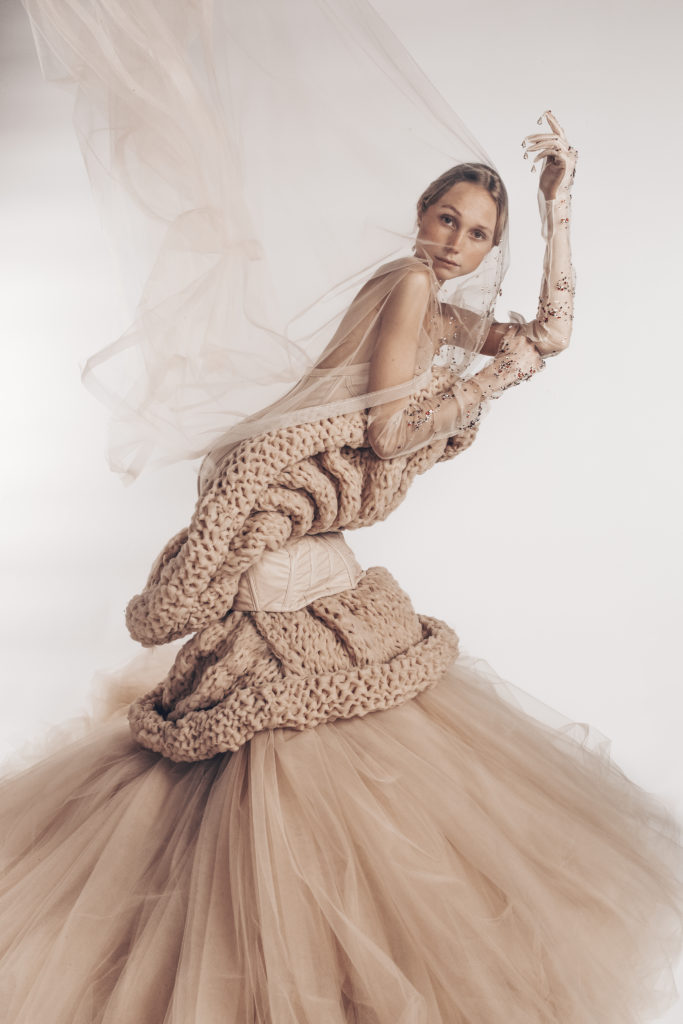
Did you reach any point in time where you were like, this is what you sketched out, but you couldn’t translate it to a garment?
When you drape as a designer, it gets frustrating because you’re thinking, “okay, how am I going to go about doing this in reality?” I think I was pretty good at making the textiles that I wanted to use for my final pretty early on in my development, and that’s one of the most important parts, having a solid piece of material to drape on the form with. It lets you know what you’re up against as far as challenges in the shape and weight. I did have a super struggle of sorts because I had all these knit pieces but no clue what I was going to attach it to. I went to New York in search of textiles and found this fabric called Organdy that gave me the perfect structure to build on. There is probably only one garment that I believe turned out slightly off from my sketch, but I think I pulled it off for the most part.
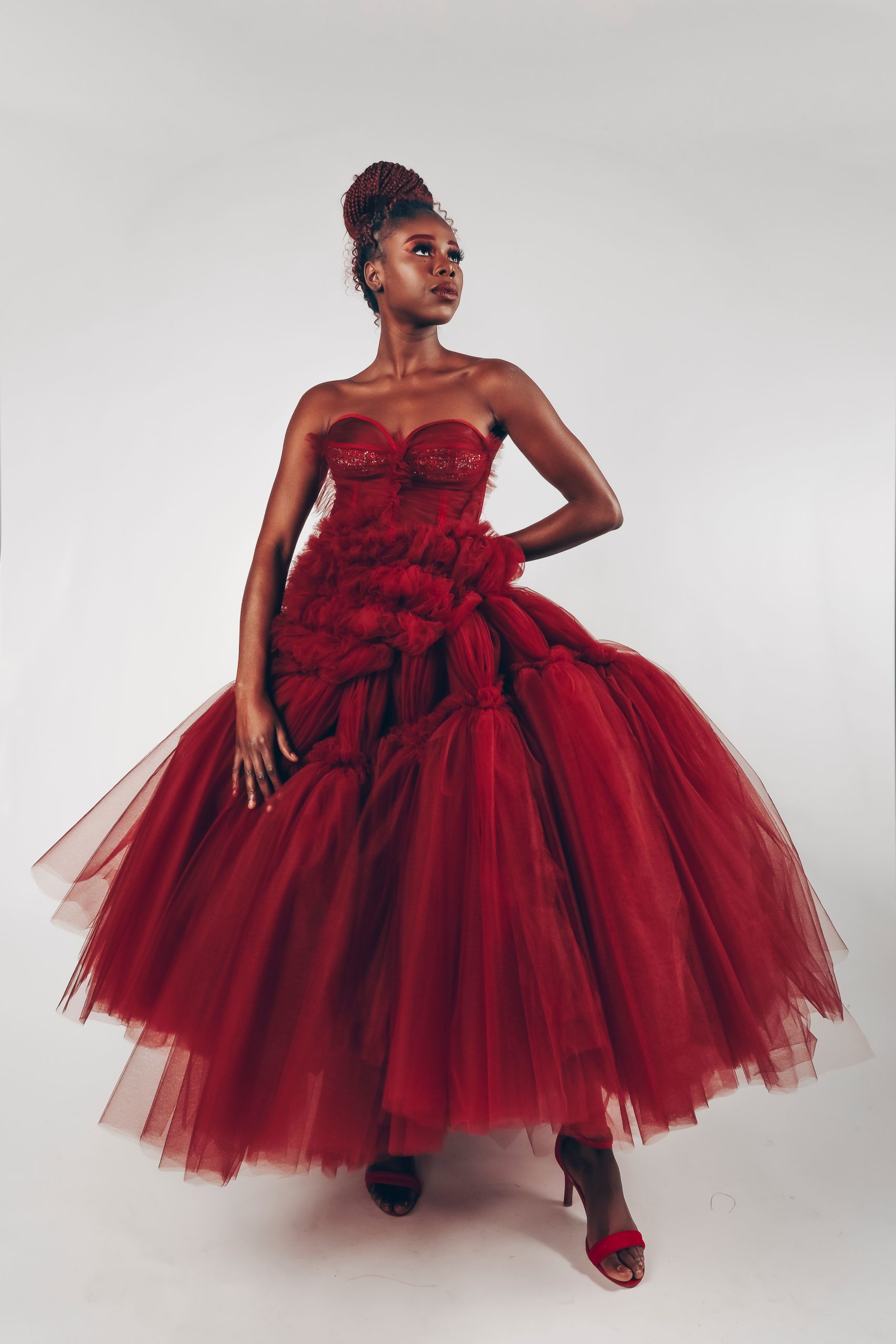
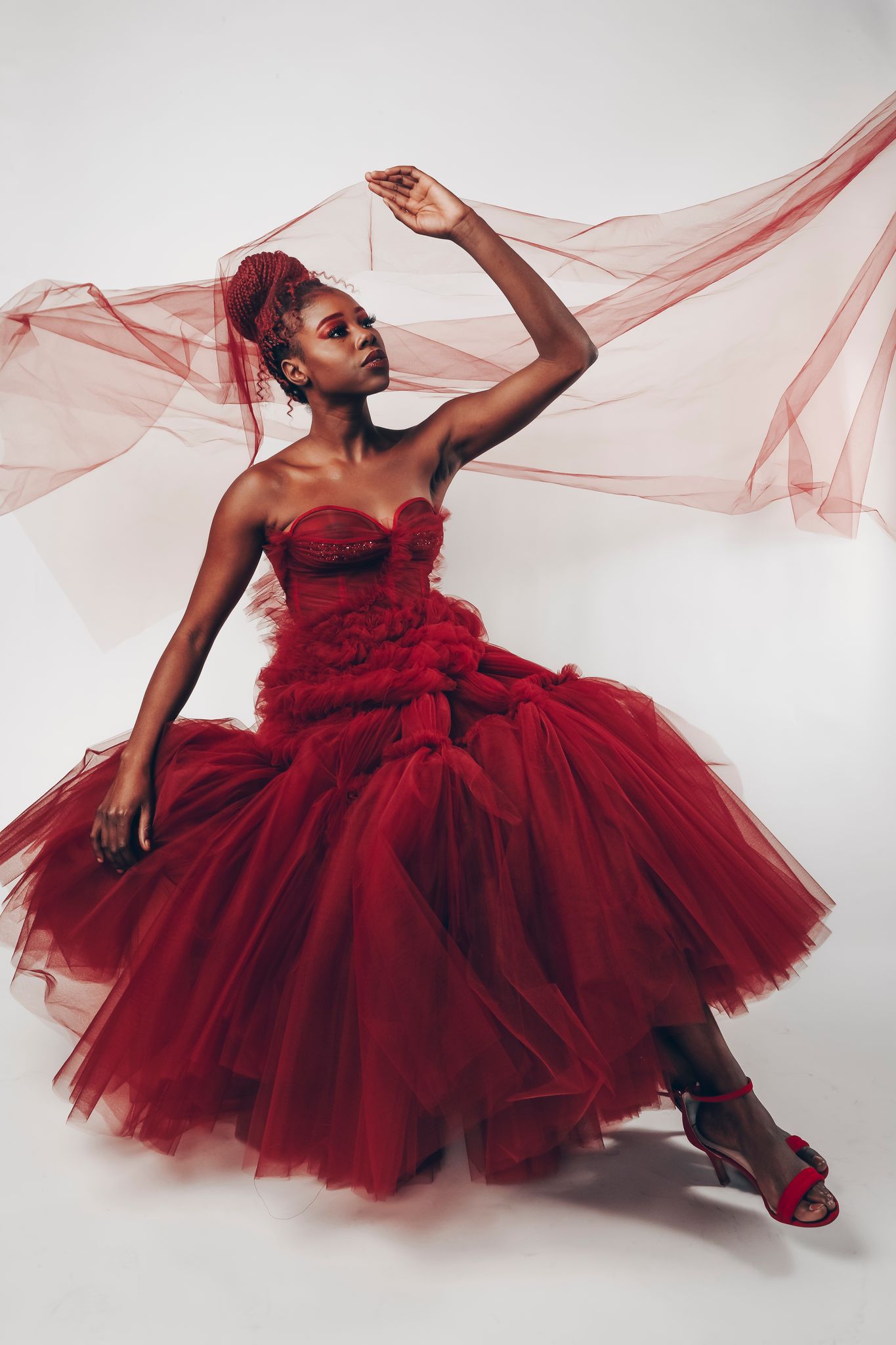
Do you have any advice for the next batch of seniors and making their collection?
I would say just go with the flow. There will be so many times that you feel it’s overwhelming, that you can’t do it, or it’s never going to get done in time. But if you just kind of take one step at a time and let things evolve naturally, they will turn out in the end. Comparison is the thief of joy, so let yourself be inspired but never try to be like someone else. You’re always in the fashion building, surrounded by everybody else, and it’s hard to stay focused on you and what you want instead of all of the outside influences. Don’t compare yourself to anybody else, you’re doing what you should do, because it’s your voice as a designer. And just honestly, believing in yourself, no matter what anybody else says, no matter what goes on in critiques, just believing in yourself will make it all okay.
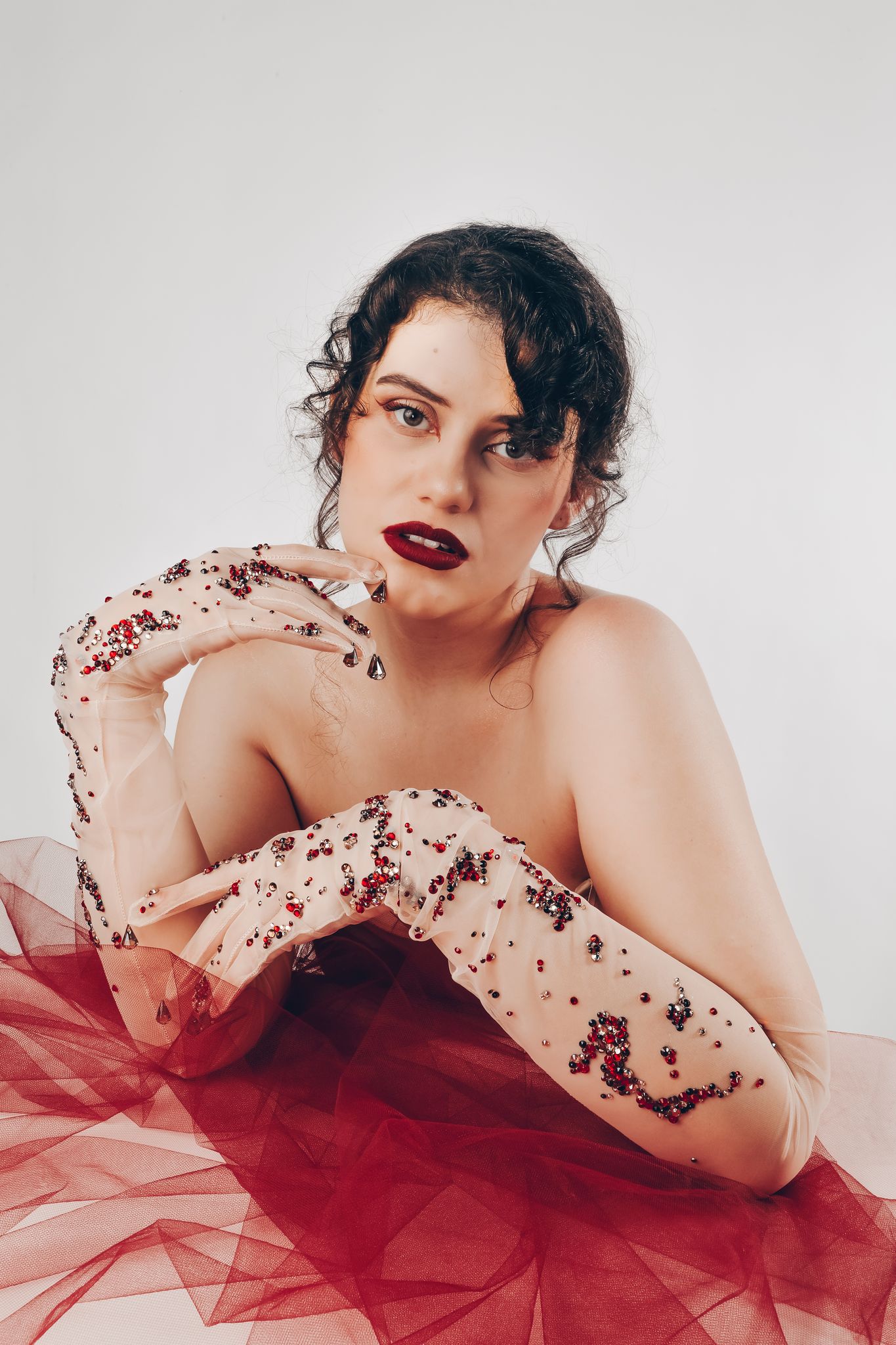
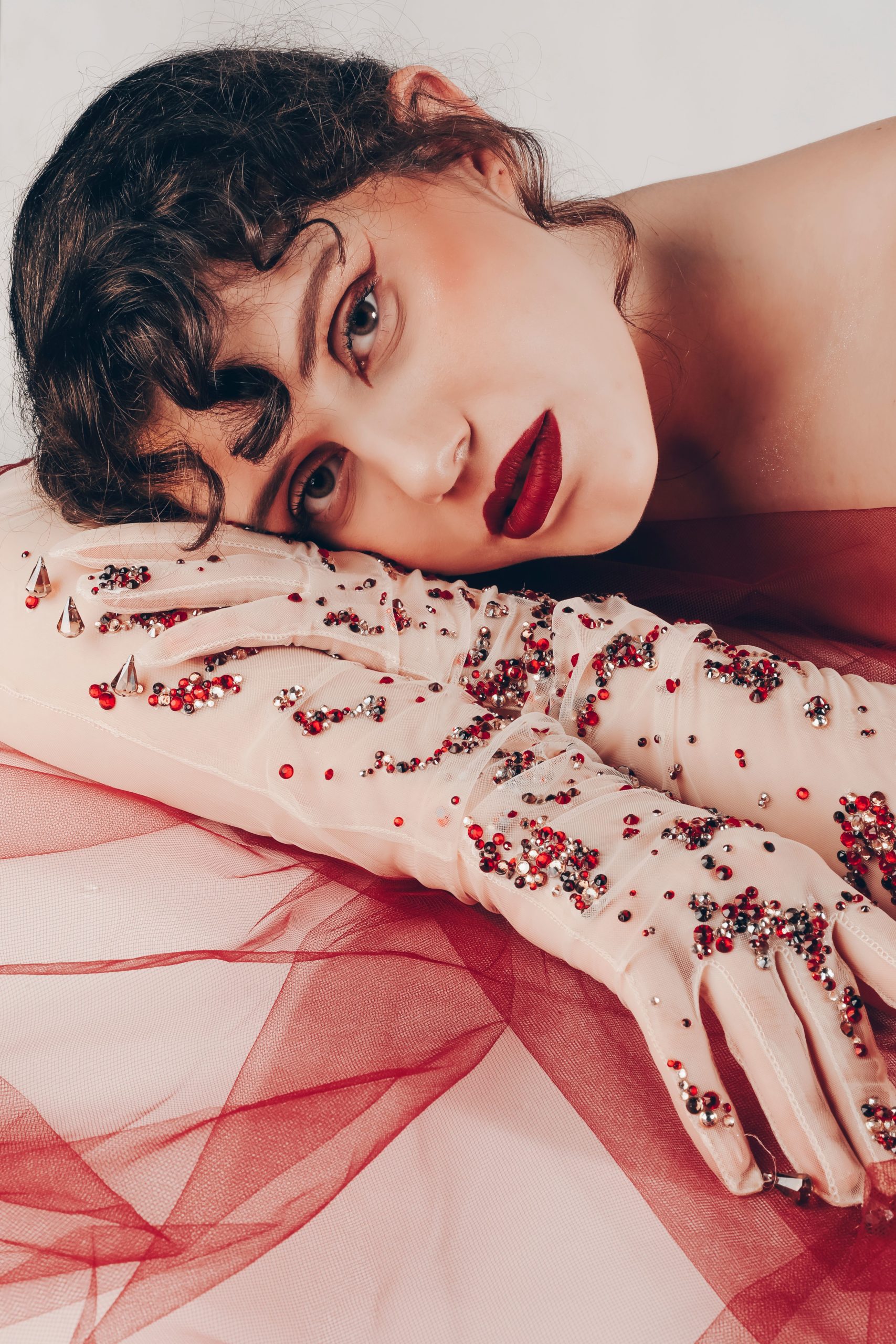
How many days how many weeks Do you spend knitting?
I watched all of the seasons of “The Amazing Race” while making my prototypes, and that’s when people asked me how long it took me for that type of thing. I told them, “literally all 32 seasons of The Amazing Race.” That’s how I quantified my knitting. I finished the last season the day before the critique, and it felt like a celebratory moment. I’m working my way through the 42 seasons of “Survivor” for my finals, and boy, does it feel like I am one.
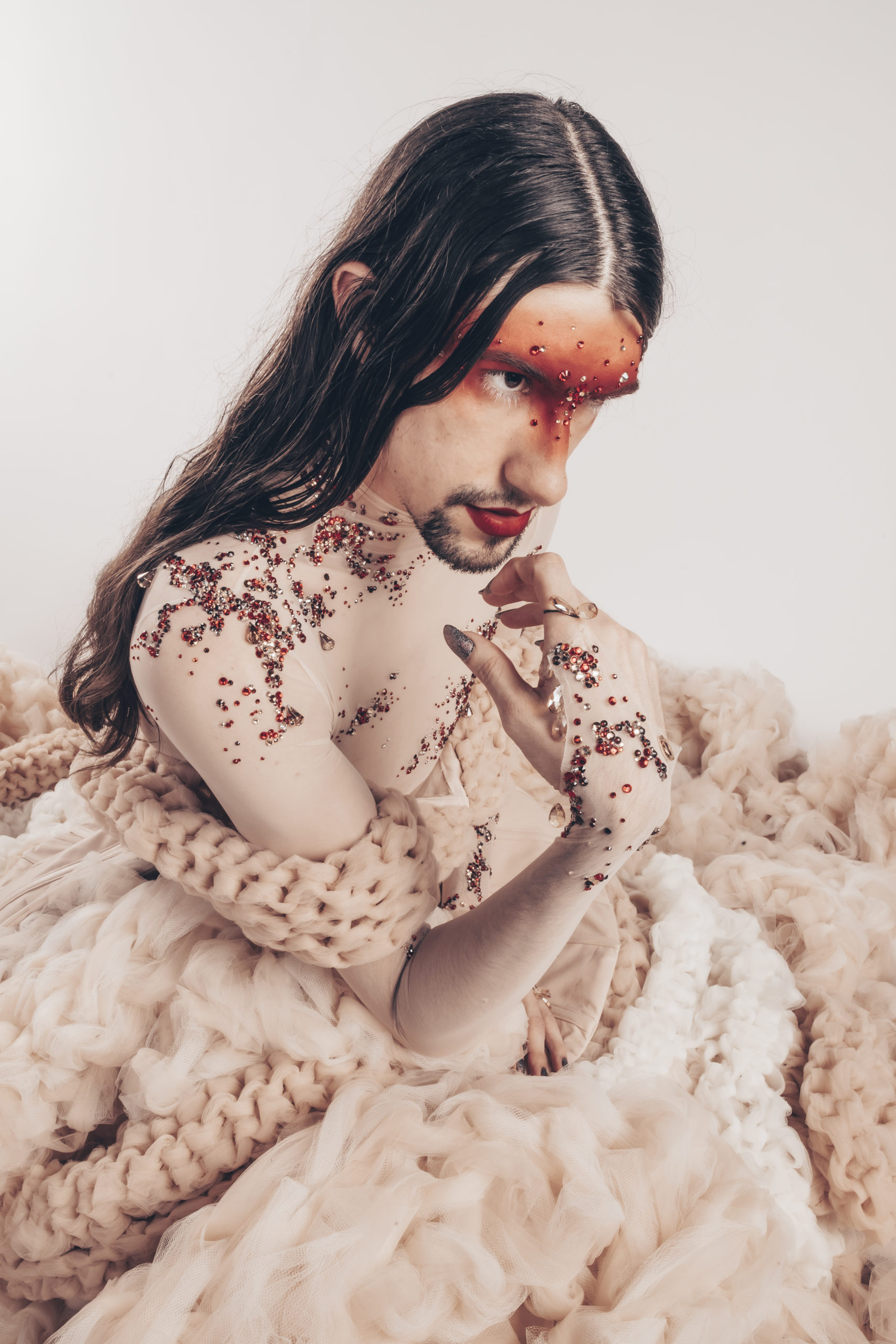
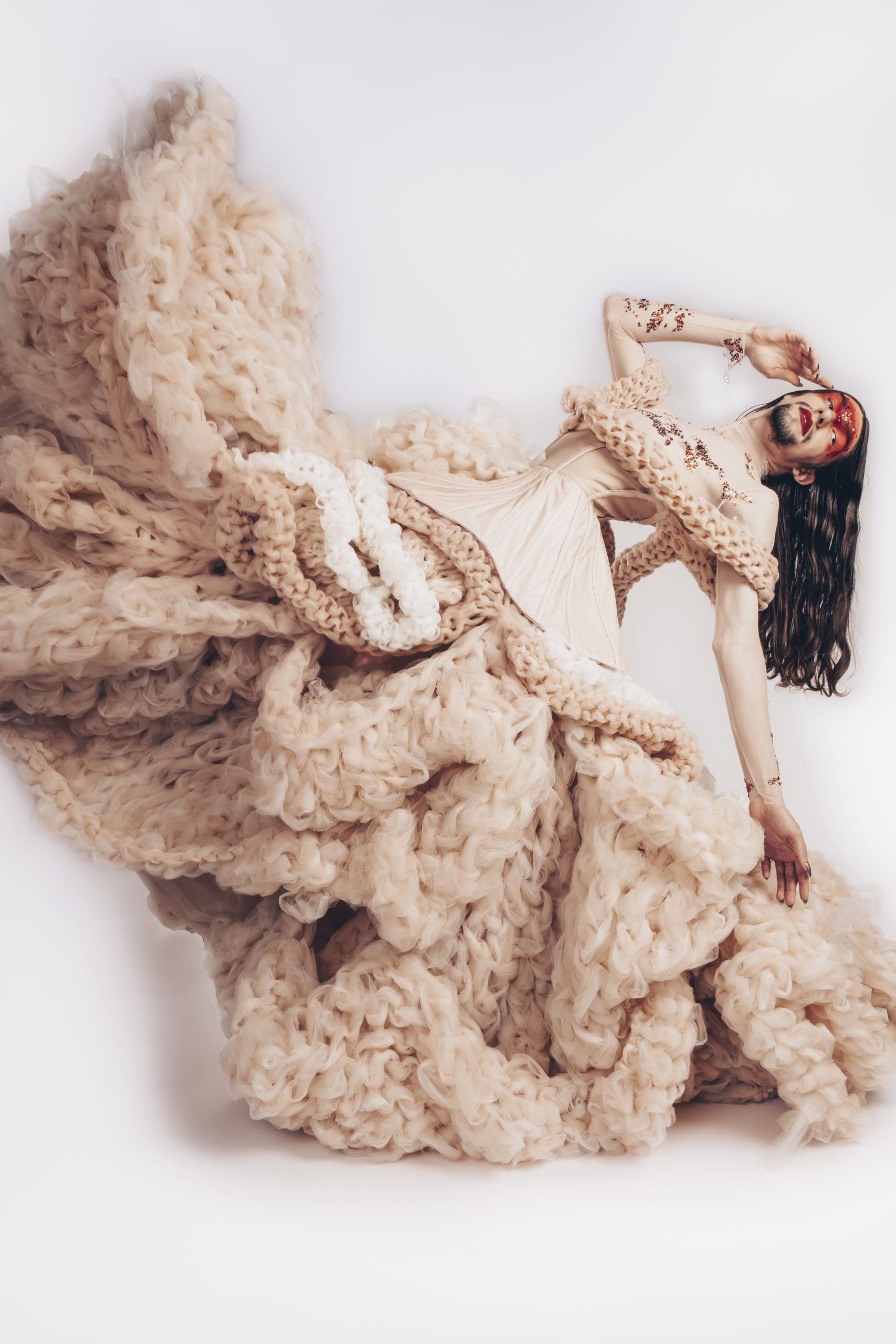
Do you think your senior collection has prepared you for your post-grad career?
Yes, and no. The intensity of it all has helped in a few ways, teaching me to push myself further and harder to achieve my goals. Also, if you go into sewing aspects, then hell yes. I’ve learned so many of the technical things that I never had reason to learn before, such as how to sew a see-through corset or the most efficient way to cut the tulle into strips for knitting, useful stuff. On the other side, though, knowing that I’m just designing for me, not for a client, makes it different. In the industry, I’m going to design for a client who has their own ideas and have a team to work with, which is not something we have access to at SCAD.
But I am ready to graduate and try my hand at it nonetheless!
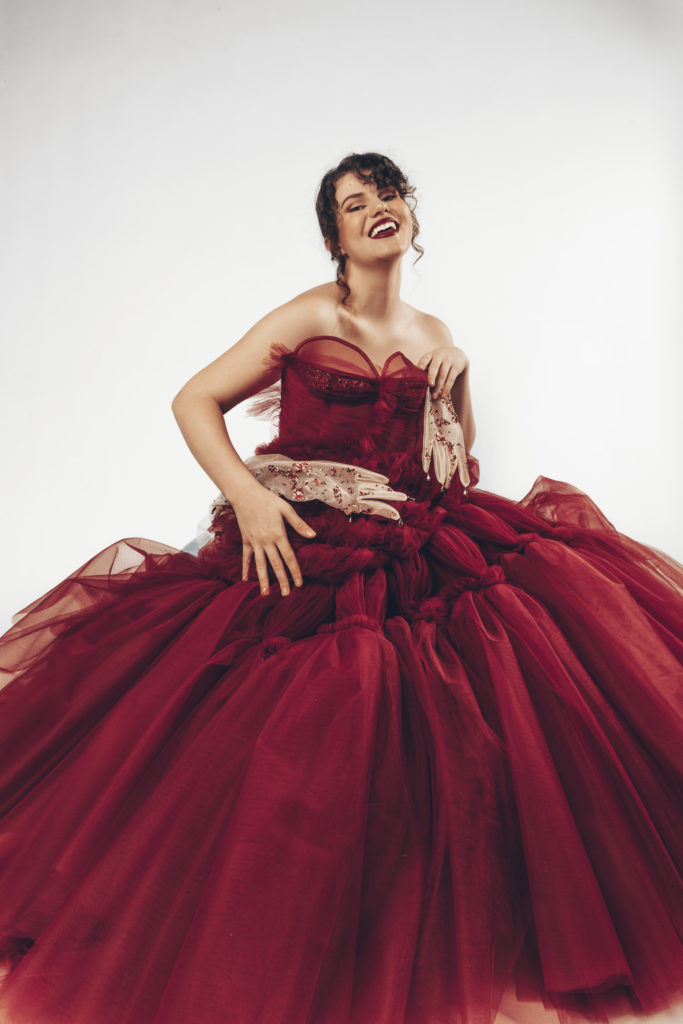
Special thanks to Hailey Kavanagh for sharing her journey and work!
Interview by Rhea Gupta.
Talent by Ryan Thomas, Kamari Duncan, Nicole Simoneau, Ebba Kihlberg, Marie Balandi, and Camelia Jesus.
Photography by Aspen Forman and Kazimir Skye.

